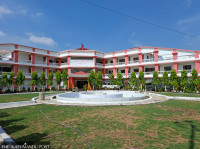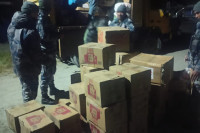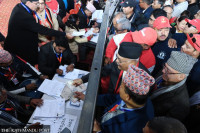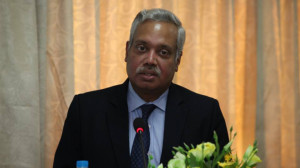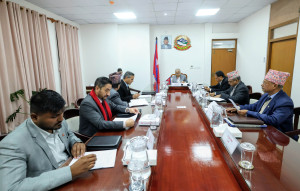National
East Nepal settlements cut off as landslides bury key roads
Travellers stranded, fuel stations dry as landslide clearance hampered by continuous rainfall.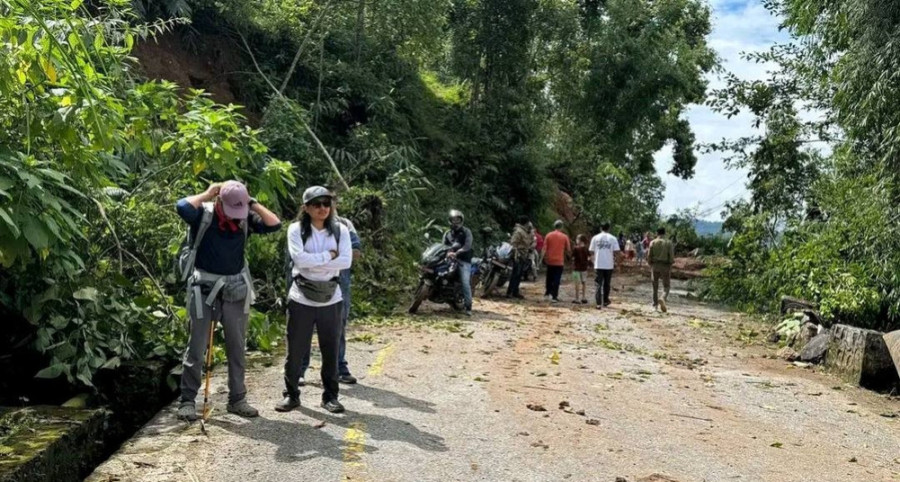
Laxmi Gautam
The Mechi Highway—the lifeline connecting the eastern districts of Jhapa, Ilam, Panchthar, and Taplejung—has been brought to a standstill after massive landslides and floods triggered by incessant rainfall on Saturday night. The disruption has cut off several settlements and villages, leaving hundreds of travellers stranded, fuel stations dry, and local administrations scrambling to restore connectivity.
Officials said the continuous downpour on Friday and Saturday caused over 80 major and minor landslides along the highway section between Ilam and Panchthar. Key road segments — from Jorkalas to Phikkal, Godak, Rajdhuwali, Ilam Bazaar, Dhobhidhara, Biblate, Puwakhola, Rakse, Nepaltar, Ranke, and Phidim — have been buried under mud and debris.
“More than 20 landslides have been cleared between Jorkalas and Rajdhuwali, and about two dozen from Lalikharka of Phidim to Bhadaure, but over 50 large ones remain between Bhadaure and Biblyate,” said Pawan Bhattarai, chief of the Ilam Road Division Office. “We’ve deployed two excavators near Biblyate to clear the Puwakhola stretch, but landslides around Maikhola Bridge and Rajdhuwali are too severe. The ground is still unstable, with mud and water flowing constantly.”
The Mechi Highway is the only major route linking the hills of eastern Nepal with the lowland districts and national trade corridors. The disruption has paralysed the movement of goods and people, with the Ilam District Administration urging travellers to avoid the route altogether.
“Travellers are advised not to attempt long-distance journeys until the route is fully reopened,” the administration said in a public notice.
Even though road clearance teams have managed to open sections from Jorkalas to Maikhola and Taplejung to Puwakhola, the Rajdhuwali–Bhadaure segment remains completely blocked. Several travellers who relied on unverified reports that the road had reopened have been trapped midway and forced to take shelter in villages along the highway.
The highway disruption has led to a fuel crisis in Panchthar, where all four petrol-diesel stations have run dry. “We have suspended sales until new supplies arrive,” said a local fuel station owner in Phidim. Public transport services have been halted, and traders warn that essential goods will soon run short if the situation continues.
The Tamor Corridor, another key route connecting Taplejung through Panchthar, Dhankuta, and Dharan to Itahari and Biratnagar, has also been blocked for two days. Sections from Kartike of Kummayak to Tumbewa and the Nawa Khola area near Chaubise in Dhankuta have been washed away. “The roads near Lakhua and Nawa Khola are severely eroded. Vehicle movement is impossible,” said a local police official.
With both the Mechi Highway and the Tamor Corridor impassable, vehicles stranded in Taplejung and Panchthar districts have begun using the longer Mid-Hill Highway route through Sankranti, Myanglung, Basantapur, Mulghat, and Bhedetar to reach Dharan — a journey that now takes 10 to 12 hours.
Landslides have also blocked parts of the Mid-Hill Highway in Yangwarak of Panchthar, while the Phidim–Yangnam–Falaut section has been left in ruins after the Pheme stream diversion was washed away. The Nepali Army’s Bir Dal Battalion in Phidim has begun building a temporary wooden bridge to allow pedestrian movement. “We’re trying to open at least a walking path for locals and stranded travellers,” said Army Major Kishor Adhikari.
Adding to the misery, false information circulating on social media claiming that the Mechi Highway had reopened lured hundreds of travellers onto the dangerous route. Many have been stuck for days without food, clean water, or shelter.
“On Sunday morning, we saw Facebook posts saying the Mechi Highway was open, so we started our journey,” said Kamala Adhikari, a pilgrim from Budhabare of Jhapa, who was returning from the Pathibhara Temple in Taplejung. “But after two days on the road, we hadn’t even reached halfway."
Local officials estimate that around 150 travellers were stranded near the Ilam–Panchthar border at Ranke and Rakse areas. “We’ve arranged temporary shelter in homes, storehouses, and schools for the stranded,” said Nutan Dev Dulal, ward 4 chair of Ilam Municipality. “But water sources have been washed away and there’s no electricity, making it very hard to manage their needs.”
According to Ilam's Chief District Officer Sunita Nepal, it could take several more days before traffic resumes along the highway. “Heavy machinery has been deployed to clear the debris, but the continuous rainfall and loose soil have made the work extremely difficult,” she said. “We urge the public to rely only on official information and avoid travelling until further notice.”
Ilam is the hardest-hit district by the late monsoon rains that wreaked havoc across the country, mainly in the Bagmati, Madhesh, and Koshi provinces. As many as 38 people lost their lives in Ilam alone as the total death toll across the country reached 55 as of Monday evening, according to the Armed Police Force Nepal.




 19.12°C Kathmandu
19.12°C Kathmandu
